Originally, Schwalm designs were predominantly arranged in straight bands because Schwalm whitework was most often intended for bed coverings, parade cushions and women’s bodices.
However, other common designs were corner motifs, mainly used for decorative handkerchiefs, and designs used for embellishing the groom’s shirt.
Schwalm designs have evolved with changing lifestyle habits and the resulting intended use for the embroidery (e.g., as table linen).
Wreath designs became very popular, but all other basic geometrical forms can be found:
squares, rectangles, ovals as center designs

squares, rectangles, or ovals with borders of different widths

circles, half circles, crosses

Also, of course, there are individually designed shapes.

Naturally, there exists a wide range of designs from a group of diverse designers. However, it is not always easy to get such designs. Creating one’s own design is not only fun, but it also enables one to tailor the design to specific form, size and aesthetics. One can use favorite motifs and techniques in unique ways to create a one of a kind piece of embroidery.
To aid you, I am currently working on a construction system for designing. It will give you hundreds of different shapes to arrange as your creativity dictates. This is a complex and elaborate venture and it will take some time to get it ready to present to you. In the meantime, here are some tips for creating a design.
First, one must decide on a basic shape and its size. The center vertical and horizontal axes need to be marked to be able to match to the fabric grain later on (in the design transfer step). For this example, a wreath design was chosen. The beige space is the design area.
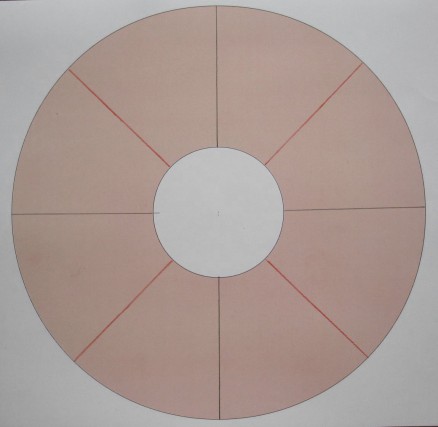
Therefore one takes some motifs, such as tulips, hearts, circles, etc., and arranges them in the design area filling the spaces between the motifs with stems, tendrils, small leaves and small flowers.
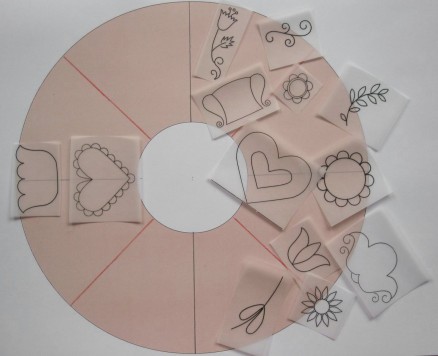
Of course not all design elements have to touch the edges of the basic shape, but the established design has to match the basic shape – as the picture of a section of a design shows below.

Which shape size, proximity of design elements, filling of open areas – all these are a matter of personal taste and preference. For clarification I present two very different wreath designs of approximately the same size.
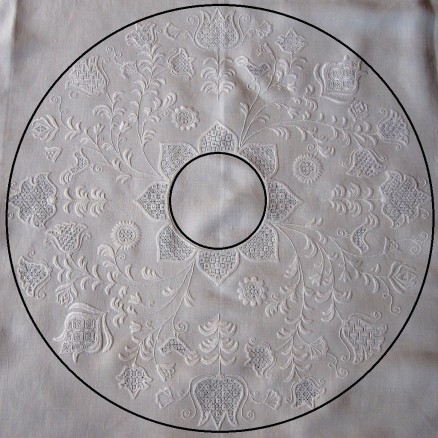
Alexandra Thielmann used for her design (picture above) relatively small and cheerful motifs and filled the open areas with many curved stems with many feathery leaves. The effect is full, but light and airy.
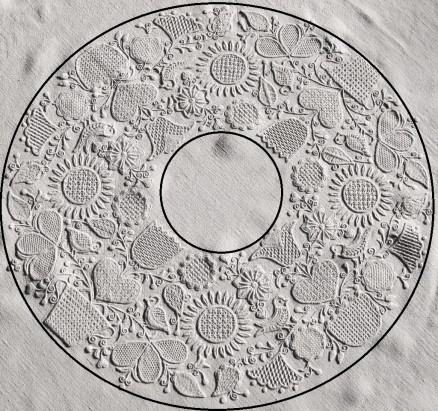
Herta Schneider used for her design (picture above) more classical shapes and placed them much closer together. She filled the open areas between with connecting stems, many tendrils, some leaves and small flowers.
To see more examples of designs, please visit my page “Variety” and look carefully to the pictures paying attention to the sizes of the motifs, density of the arrangement and the filling of the spaces between design elements. More design examples can be found in the header of my website; they change automatically by moving to another page. And, of course, one can see a huge selection of excellent design examples in my Exhibition Catalogue 2011“The Art of Schwalm Whitework”.
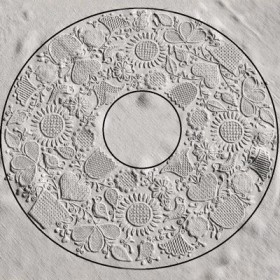


Stunning, thanks for sharing your design expertise with us.